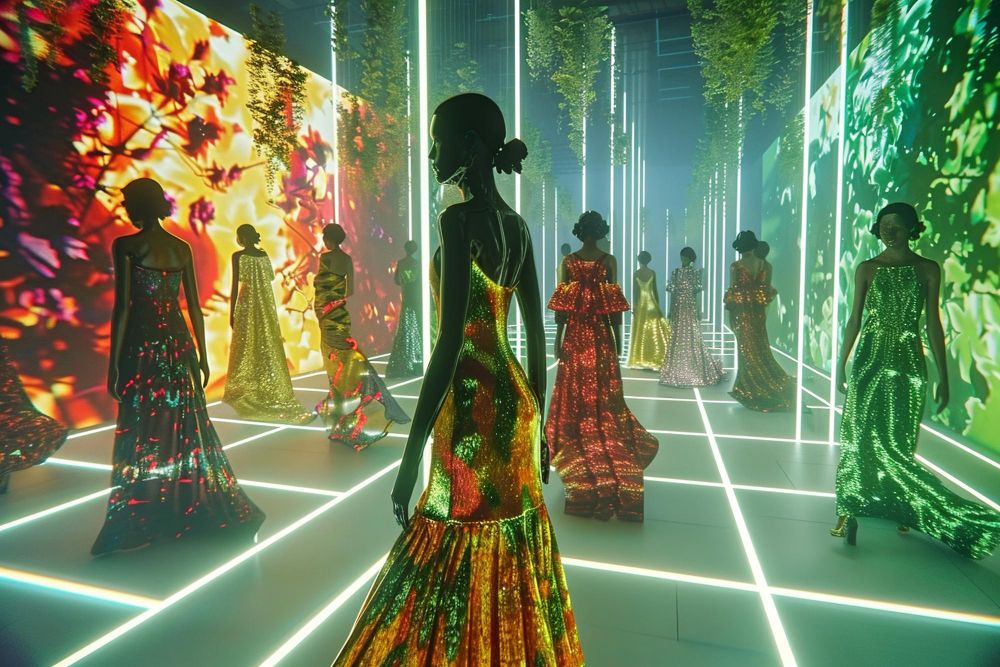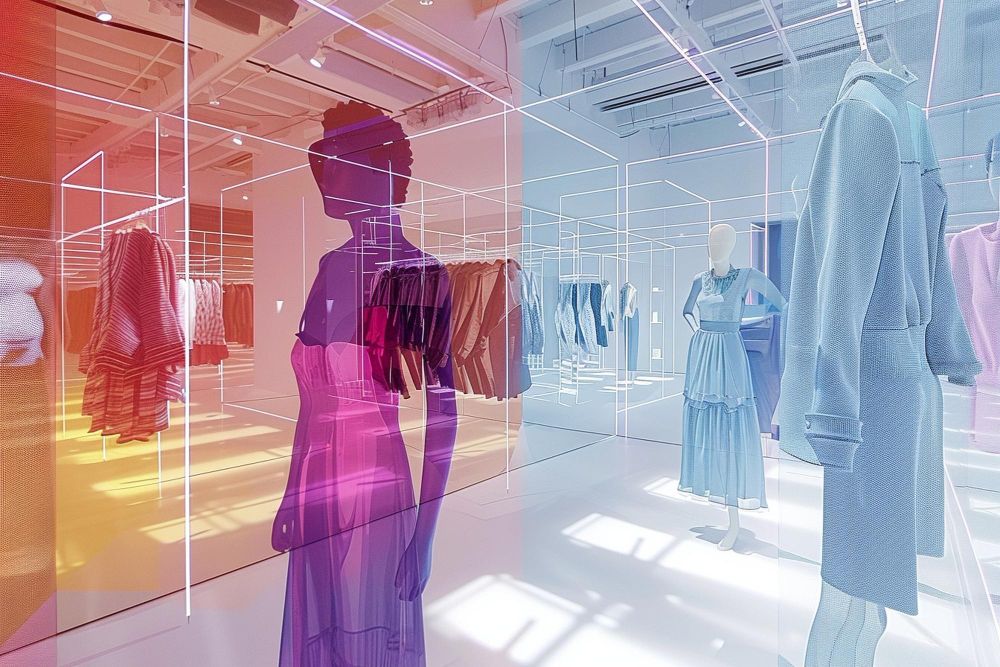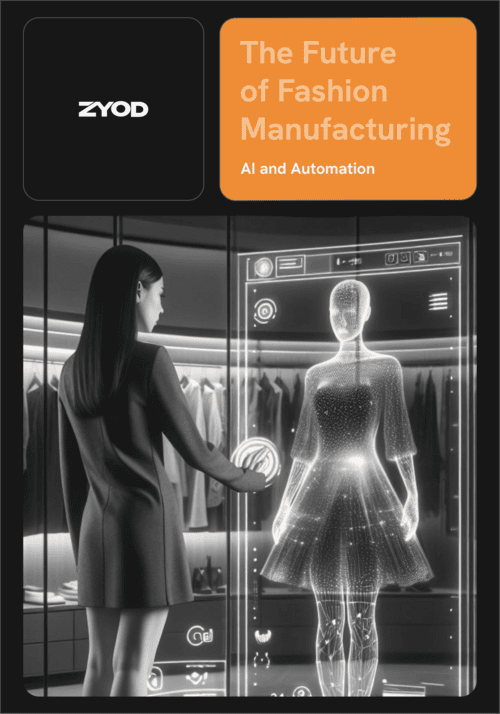In the rapidly evolving world of fashion manufacturing, the industry finds itself at a crossroads, navigating through a dynamic landscape shaped by technological advancements. Currently, traditional methodologies prevail, but there is a growing recognition of the need for transformative changes. The fashion manufacturing sector is undergoing a shift, prompted by the imperative to innovate and adapt to the ever-changing demands of the market. As consumer preferences and global trends fluctuate, the industry is compelled to explore new horizons, particularly through the integration of Artificial Intelligence (AI) and automation.
The fashion market's Artificial Intelligence (AI) segment is poised for remarkable expansion over the upcoming years, projected to reach $4.95 billion by 2028 with a substantial compound annual growth rate (CAGR) of 40.2%. This surge is anticipated to be fueled by the adoption of voice-activated shopping, predictive trend analysis, and dynamic pricing strategies. Prominent trends during this period include the incorporation of virtual try-on experiences, personalized recommendations, the utilization of computer vision for style recognition, enhanced supply chain optimization, and the extensive adoption of chatbots and virtual assistants.

- The Rise of AI in Clothing Manufacturing:
The fashion manufacturing landscape has experienced a notable shift with the increasing influence of AI. Predictive analytics powered by AI algorithms have become instrumental in enabling fashion manufacturers to make well-informed decisions based on data analysis. This analytical prowess helps uncover patterns and correlations in vast datasets related to consumer preferences, historical sales figures, and emerging fashion trends.
The result is a more accurate understanding of market demands, reducing the risks associated with overproduction or underproduction. The integration of AI in predictive analytics not only enhances operational efficiency in clothing manufacturing but also addresses long-standing challenges, fostering a more agile and responsive approach to fashion manufacturing.
2. AI-Powered Design Tools:
The incorporation of AI in fashion design introduces a new dimension to the creative process. AI enables data-driven decision-making, pattern recognition, and the generation of unique patterns, styles, and colors. Designers benefit from time-saving tools, iterative design capabilities, and enhanced creativity as AI handles repetitive tasks. When designers collaborate with AI, the process becomes quicker and more cost-effective. AI's strength lies in its ability to swiftly analyze large volumes of data, proposing design adjustments at an impressive pace.
The designer can then sift through and approve these adjustments based on the insights provided by the data. This approach enables the swift creation of effective designs for testing, allowing the development of multiple prototype versions that can be A/B tested with users. It's like having a helpful assistant that accelerates the design process, making it more efficient and adaptable to user preferences.
3. Sustainability Through Automation:
Automation plays a crucial role in optimizing material usage and minimizing environmental impact. The fashion world, unfortunately, has a significant impact on our environment, accounting for 10% of the world's yearly carbon emissions. However, there's a positive shift happening with the adoption of AI trend forecasting. This technology is a game-changer, cutting down on the uncertainty and mistakes that often happen in predicting trends. By doing so, it guides companies to invest in clothing ideas that resonate with customers.
By simplifying thrifting, encouraging pre-loved purchases, and offering virtual try-ons, it not only brings joy to shoppers but also slashes returns by 55%, curbing waste and making our planet a little happier.

4. Collaboration between Humans and Machines:
AI is currently employed in fashion for trend analysis, aiding collaborative design, and optimizing production schedules. Machine learning enhances customer experiences through personalized interactions, while computer vision streamlines inventory management and supply chains.
The future entails deeper integration of AI in fashion, expanding virtual assistants' roles in customer support, and refining predictive analytics for more accurate trend forecasting. Advanced AI applications may lead to innovative design tools and sustainable practices, further bridging the gap between humans and machines in the fashion industry. The integration of AI in wearable tech and augmented reality could redefine how humans and machines collaborate, blurring the lines between traditional design processes and cutting-edge technology.
5. Challenges and Opportunities:
The integration of AI in fashion sourcing demands careful financial investment in a reliable data intelligence platform, posing challenges for smaller retailers with limited resources and expertise. Ethical considerations, including data privacy and job displacement concerns, underscore the importance of responsible AI management. AI empowers retailers to forecast trends, optimizing popular product sourcing, and enhancing agility. By streamlining operations, AI aids efficient supplier selection, contributing to competitiveness. In risk management, AI offers insights, empowering retailers to make informed decisions amid uncertainties.
Despite challenges, AI offers exciting opportunities for retailers, from trend forecasting to streamlined operations. Responsibly addressing ethical concerns and investing in AI education can empower retailers to navigate these challenges and unlock the full potential of AI in fashion sourcing.

Conclusion
As we gaze into the future, the transformative impact of technology on the fashion manufacturing industry becomes increasingly apparent. This integration not only propels efficiency but also fosters a shift towards a more sustainable and adaptive industry. The narrative of tomorrow's fashion manufacturing is being written by the nimble dance between human creativity and technological prowess, promising a future where innovation and responsibility converge in a symphony of progress. The era of smart, sustainable, and technologically driven fashion manufacturing, subtly empowered by Zyod, is here to stay, reshaping the industry in ways previously unimaginable.






